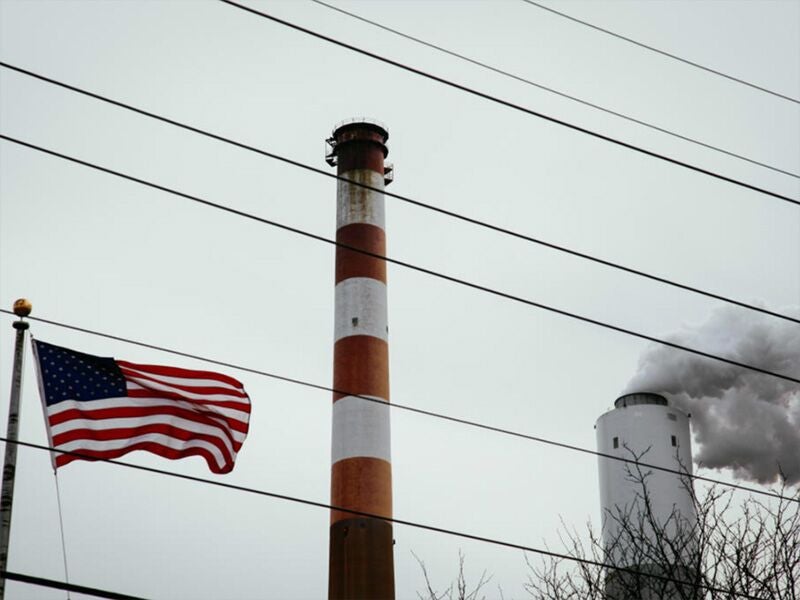Building Up to a Bailout: New Department of Energy Study Makes Up Reasons to Promote Coal
The evidence gathered shows the grid is reliable, but the recommendations are trumped up.

This page was published 8 years ago. Find the latest on Earthjustice’s work.
The Department of Energy (DoE) released a study of our nation’s energy grid that attempts, but ultimately fails, to lay the groundwork for the coal industry to get a bailout.
President Trump’s energy secretary Rick Perry ordered the study in April, in what appeared to be a fishing expedition for excuses to keep “baseload” power—meaning coal and nuclear—on the grid. This is akin to doing a study of the importance of landline phones, while ignoring the boom in smartphones. It makes sense in the light of Trump’s agenda to prop up coal. As a reminder of his single-minded mission, just a few days before the study’s release last week, news leaked of Trump’s promise to coal executives to bail out their failing plants.
Most of the study’s underlying data is actually solid. Hard-working career DoE staff had a tough job: Take a few months to canvas the literally thousands of pages of existing studies looking at grid reliability and offer policy recommendations. They pulled together evidence that resoundingly shows the grid is reliable, even with a sizable number of closures of old coal plants. Further, the grid is evolving to handle more and more renewable energy reliably and affordably. And, buried deep in the report, comes an acknowledgement that clean energy creates jobs.
But the report doesn’t follow these findings to logical conclusions. Instead, the recommendations steer clear of climate change and offer a roadmap that would cost customers and taxpayers billions of dollars to attempt to bail out the failing coal industry. These aren’t just proposals in the abstract—many of the policies are already in the works, pushed forward by utilities and coal industry executives that have a lot to gain.
Some of the most concerning issues in the proposal include:
- Changes in pricing – Currently, power plants bid to provide energy to a wholesale market. And these days, coal and nuclear plants are winning fewer bids as natural gas and renewables undercut their prices. The DoE proposes changing how prices are set in the auctions so that aging coal and nuclear plants have a better shot at winning. This boils down to paying these plants more for the same old product—and it is customers who would shoulder that cost.
- Resilience – The DoE calls for greater focus on the “resilience” of the grid, as distinct from the more common notion of “reliability.” Reliability is concerned with whether there is enough power on the grid to meet demand without interruptions. To use a sports metaphor, reliability is making sure you have extra players on the bench who can jump into the game when needed. The DoE study confirms what’s already been well-established: In general, we have more than enough players—power already on the grid—to ensure reliability. This makes it hard to justify paying old plants extra to hang around on the grid as mere benchwarmers. Enter the concept of resiliency, which attempts to argue that it matters what kind of players are sitting on the bench. The idea could make sense if it actually helps the team play a better game—not just picking the coach’s favorites. But the coal industry wants to define resiliency by arbitrary metrics that favor baseload power produced by coal and nuclear, such as how much fuel is kept on site. The grid study offers no backing for the claim that a grid with coal or nuclear is more “resilient.” (Even a conservative think tank rejects coal’s primary claim, that coal is more dependable during extremely cold winters.)
- Energy dominance – This concept has nothing to do with our energy grid, nor the report’s underlying research, but instead argues for Saudi Arabian or Russian-style economic development by drilling and digging up as much fossil fuel as possible. A genuine focus on the economic needs of American communities would foster, not ignore, the booming clean energy sector, and would enhance, not gut, support for coal workers and communities as they transition to new livelihoods. Earthjustice is already fighting unlawful and senseless giveaways to extractive industry execs, which harm rather than help local communities.
- More efficient coal – The DoE recommends that the EPA give a pass to coal plants that “improve efficiency,” a move that would violate federal law. While such improvements might allow an aging coal plant to produce a bit more electricity from the same amount of coal, those changes would result ultimately in the production of more pollution—a change that requires the adoption of up-to-date pollution controls. This amounts to a “get-out-of-jail-free card” for our basic and essential protections of clean air.
The good news is these terrible policies are not yet set in stone. Earthjustice will continue to advocate against proposals that would lock in place dirty plants, charge customers more for electricity and reverse progress in the fight against climate change. And we will continue to challenge bailouts to old power plants at the expense of the consumer.
Earthjustice’s Clean Energy Program uses the power of the law and the strength of partnership to accelerate the transition to 100% clean energy.